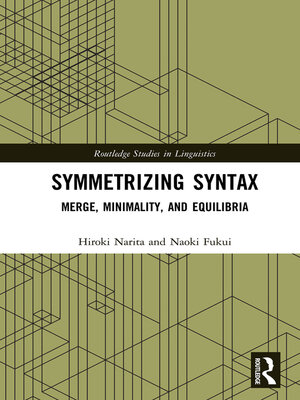Symmetrizing Syntax
ebook ∣ Merge, Minimality, and Equilibria · Routledge Studies in Linguistics
By Hiroki Narita

Sign up to save your library
With an OverDrive account, you can save your favorite libraries for at-a-glance information about availability. Find out more about OverDrive accounts.
Find this title in Libby, the library reading app by OverDrive.



Search for a digital library with this title
Title found at these libraries:
| Library Name | Distance |
|---|---|
| Loading... |
Symmetrizing Syntax seeks to establish a minimal and natural characterization of the structure of human language (syntax), simplifying many facets of it that have been redundantly or asymmetrically formulated.
Virtually all past theories of natural language syntax, from the traditional X-bar theory to the contemporary system of Merge and labeling, stipulate that every phrase structure is "asymmetrically" organized, so that one of its elements is always marked as primary/dominant over the others, or each and every phrase is labeled by a designated lexical element. The two authors call this traditional stipulation into question and hypothesize, instead, that linguistic derivations are essentially driven by the need to reduce asymmetry and generate symmetric structures. Various linguistic notions such as Merge, cyclic derivation by phase, feature-checking, morphological agreement, labeling, movement, and criterial freezing, as well as parametric differences among languages like English and Japanese, and so on, are all shown to follow from a particular notion of structural symmetry. These results constitute novel support for the contemporary thesis that human language is essentially an instance of a physical/biological object, and its design is governed by the laws of nature, at the core of which lies the fundamental principle of symmetry.
Providing insights into new technical concepts in syntax, the volume is written for academics in linguistics but will also be accessible to linguistics students seeking an introduction to syntax.







